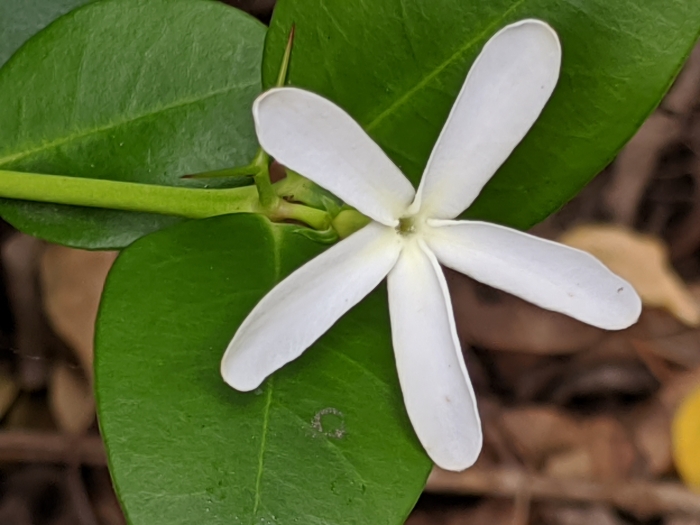Natal Plum
(Carissa macrocarpa)
Natal Plum (Carissa macrocarpa)
/
/

© Nicola van Berkel
CC BY-SA 4.0














































Estimated Native Range
Summary
Natal Plum is valued for its drought and salt tolerance, making it an excellent choice for coastal plantings and seaside gardens. It is also used as a hedge, barrier planting, or ornamental specimen due to its dense growth habit and attractive flowers and fruit. The fruit is not only decorative but also edible, commonly used in pies, jams, jellies, and sauces. Natal Plum thrives in full sun to partial shade, requiring well-drained soil and moderate watering. It is low maintenance, rarely needing fertilizer, and is generally pest-resistant. However, it can be invasive outside its native range, so gardeners should consult local guidelines before planting.CC BY-SA 4.0
Plant Description
- Plant Type: Shrub
- Height: 0.5-3 feet
- Width: 3-6 feet
- Growth Rate: Slow
- Flower Color: White
- Flowering Season: Spring, Summer, Fall
- Leaf Retention: Evergreen
Growth Requirements
- Sun: Full Sun, Part Shade
- Water: Medium
- Drainage: Medium, Fast
Common Uses
Border Plant, Edible*Disclaimer: Easyscape's listed plant edibility is for informational use. Always verify the safety and proper identification of any plant before consumption., Fire Resistant, Fragrant, Groundcover, Hedges, Low Maintenance, Potted Plant, Salt Tolerant, Showy Flowers, Street Planting
Natural Habitat
Coastal regions in Kenya to Southeastern South Africa, particularly in dune scrub and coastal thickets
Other Names
Common Names: Natal-Plum, Large Num-Num, Natal-Pflaume, Amatúngula, Cereza De Natal, Carisse, Natalplommon
Scientific Names: , Carissa macrocarpa, Carissa grandiflora, Carissa carandas, Carissa praetermissa, Arduina macrocarpa, Arduina grandiflora, Carissa africana, Jasminonerium africanum, Jasminonerium grandiflorum
GBIF Accepted Name: Carissa macrocarpa (Eckl.) A.DC.